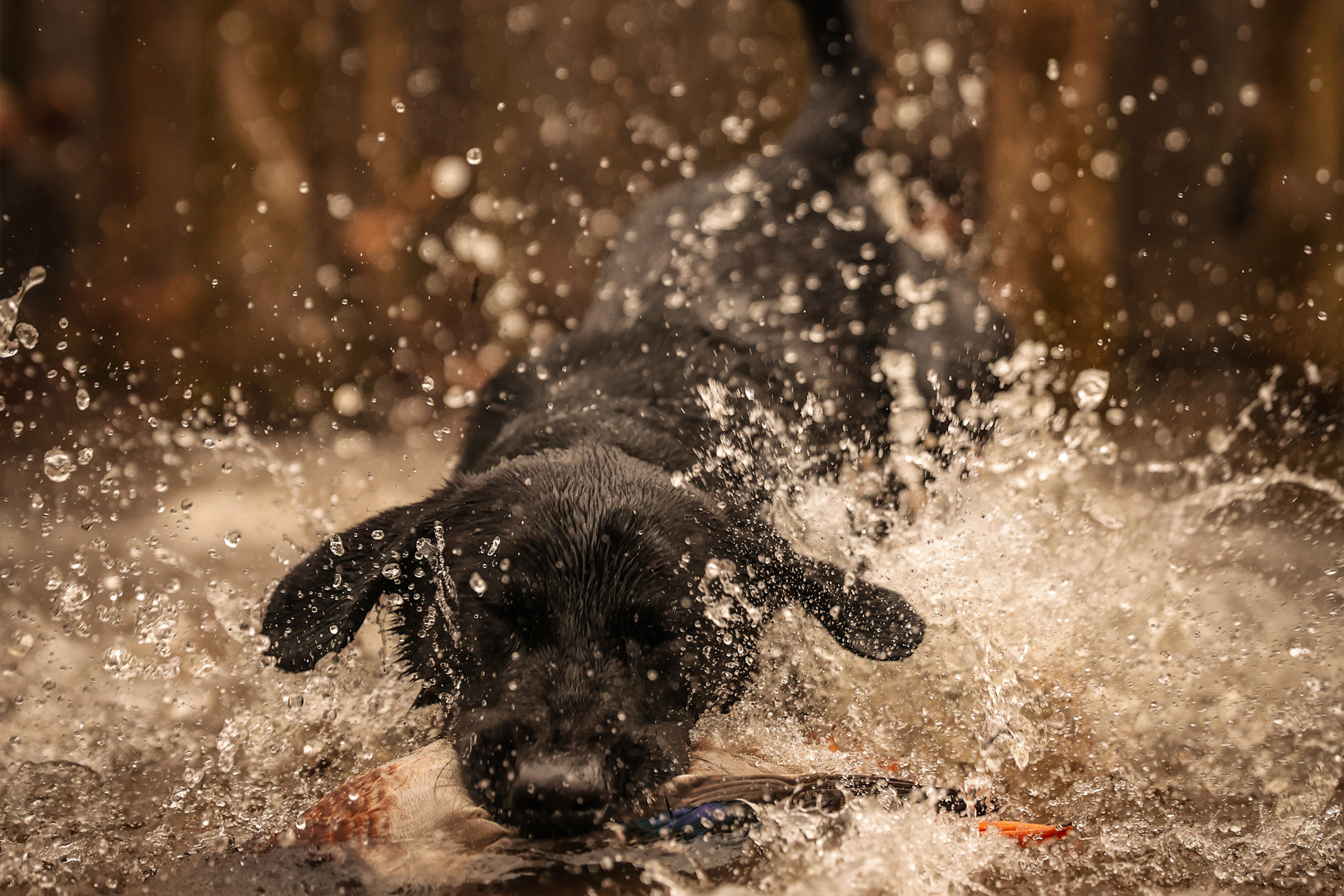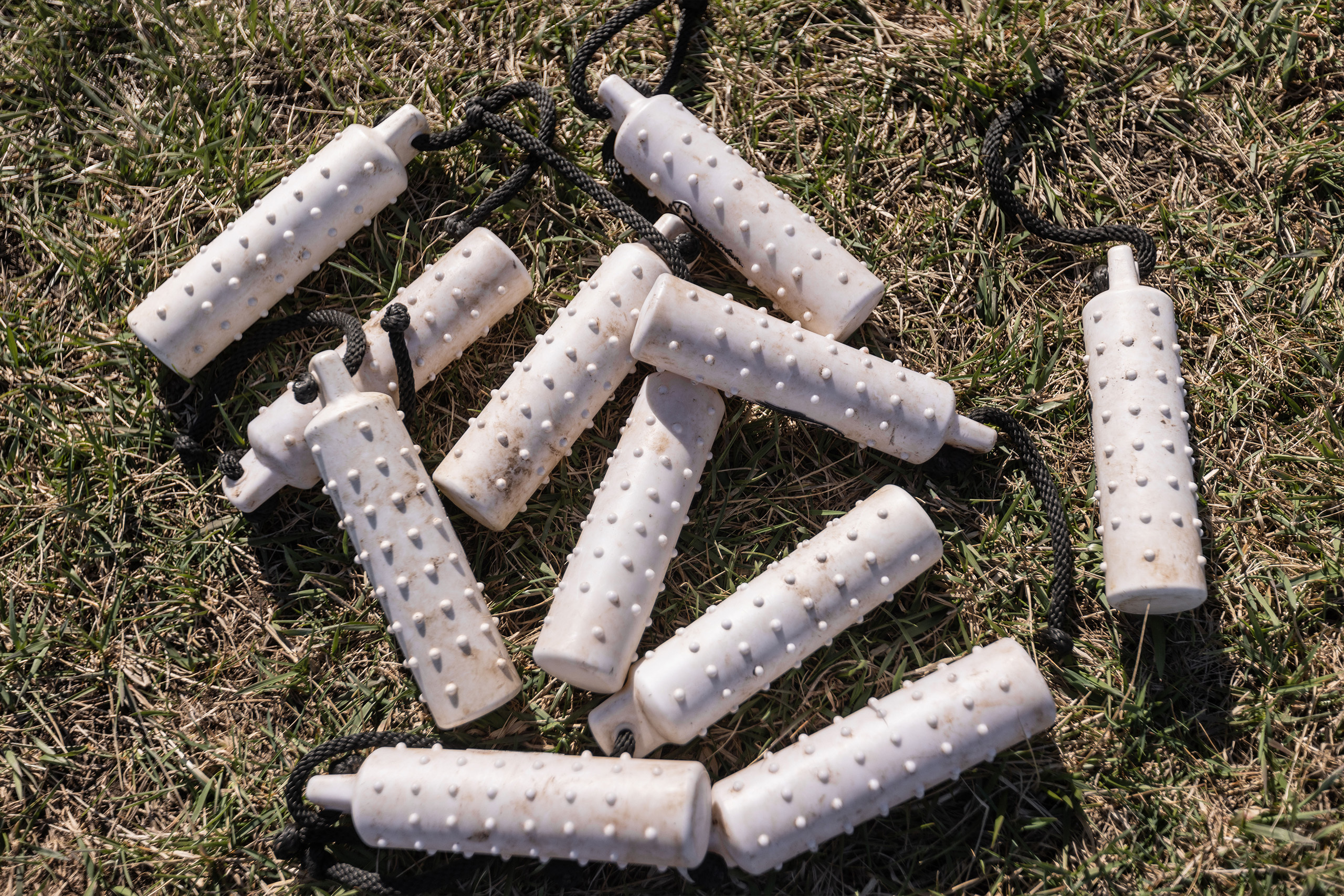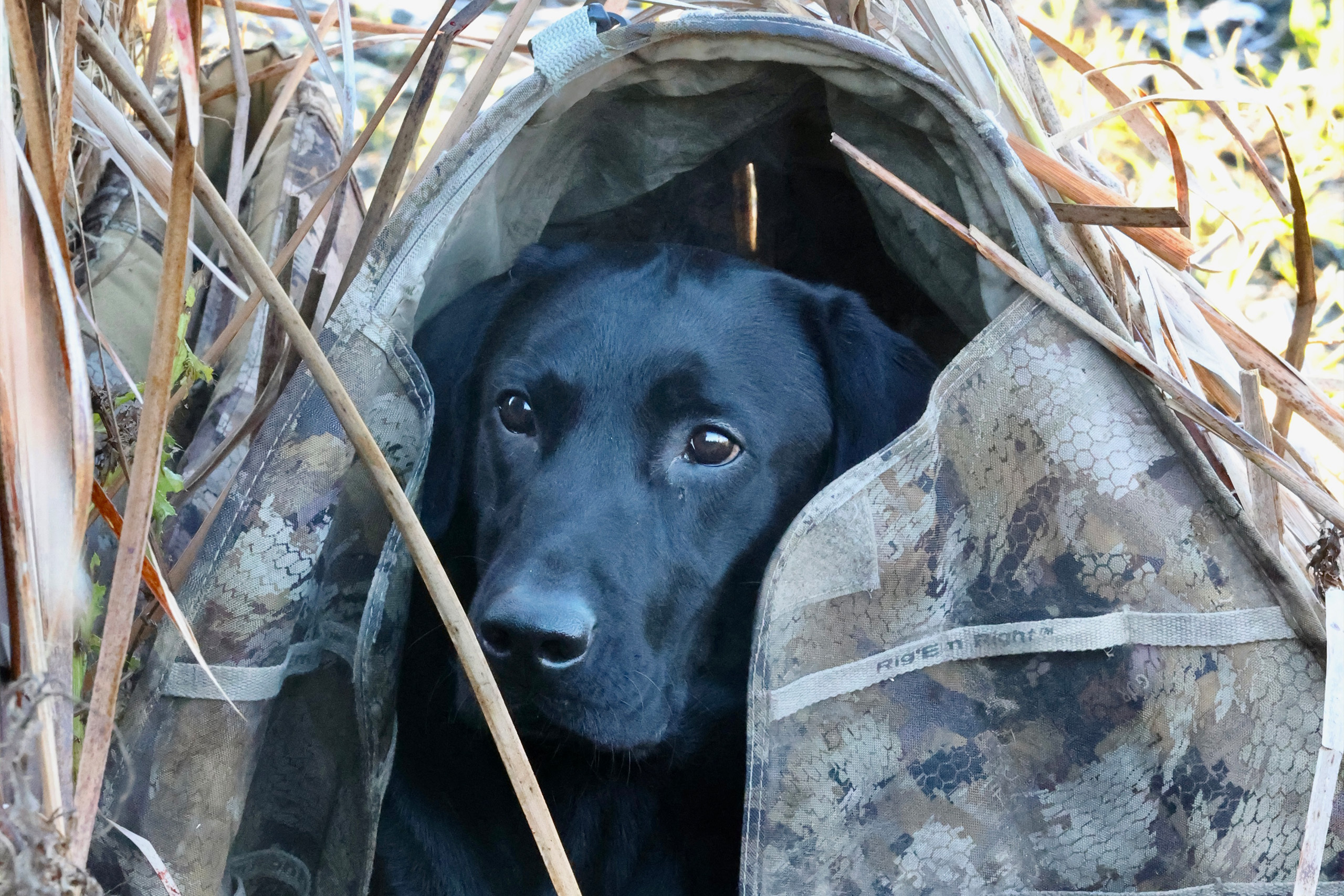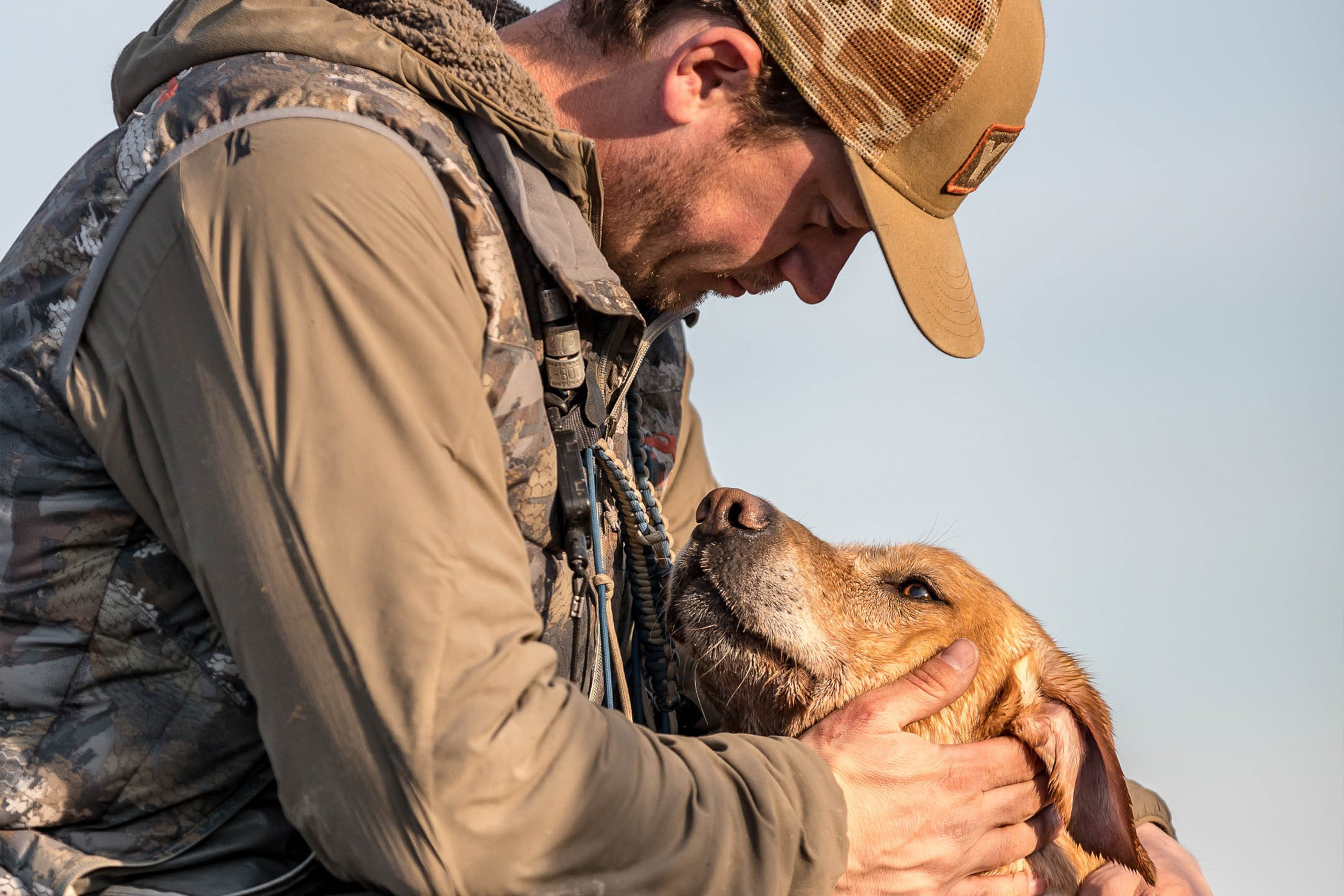Training Your Duck Dog for Its First Hunting Season
Posted by The Lucky Duck Team on May 23rd 2025
Know What You’re Signing Up For
Bringing a duck dog into your life isn’t just about having a retriever in the blind—it’s a commitment that reshapes your lifestyle. Daily training, structured exercise, and long-term care are part of the package. From missed vacations to rearranged work schedules, owning a hunting dog is a decade-plus investment in time, energy, and resources. It can also be one of the most rewarding decisions you’ll ever make. If you're not ready to work with a dog nearly every day, you're not ready to own a duck dog. But if you are, prepare for a relationship that will transform the way you hunt and live.
Set Realistic Expectations for Year One
Your dog's first season should be viewed as a training ground. If you go in with high expectations, you will likely come out with high frustration at yourself, your dog, or both. There will be mistakes, possibly on your part, but almost definitely on the part of your dog: missed retrieves, breaking, distractions, and so on. That’s all normal. Success in the first season should be considered as making progress, not attaining immediate perfection. Your pup learning to stay steady through a volley or making a single solid retrieve is a win and should be treated as such. Be patient, focus on small victories, and keep the hunt fun. Sacrificing some shooting opportunities to focus on your dog’s development now will pay dividends for the next ten years.
Choose the Right Breed and Bloodline
Breed selection isn’t just a matter of personal taste—it should be based on your hunting goals and lifestyle. If you only hunt ducks, a well-bred Labrador Retriever is hard to beat. But if you want a more versatile dog for upland birds, sheds, or varmints, you might look at breeds like Pudelpointers, German Wirehaired Pointers, or Drahthaars. Beyond the breed, bloodline matters immensely. Good genetics provide a foundation of drive, intelligence, and trainability. Do your research, talk to breeders, and invest in a dog that comes from proven hunting stock. A little legwork upfront can mean the difference between a lifelong hunting partner and a difficult training journey.
Start Obedience Training Early and Often
The foundation of every good duck dog is rock-solid obedience. Commands like sit, stay, heel, come, and place need to be second nature long before you hit the marsh. Begin training as soon as your pup comes home—typically at 7 to 8 weeks old. Keep sessions short, frequent, and consistent. Use positive reinforcement, establish clear boundaries, and be patient. As your dog grows, increase the complexity of obedience drills. Reinforcing calm behavior, especially around distractions, is just as important as teaching flashy retrieves. A dog that listens in the backyard is a dog that can be trusted in the blind.
Use Realistic, Hunt-Like Training Scenarios
No matter how well your dog performs in the yard or on a clean training field, that success doesn’t always translate into real-world hunts. Ducks don’t fall in neat lines, and blinds don’t always offer perfect visibility. That’s why your training should mirror the conditions your pup will face in the field. Practice with decoy spreads, simulate gunfire, and incorporate blinds, dog stands, boats, and layout blinds. Train in varying environments—shallow water, tall grass, uneven terrain—and introduce variables gradually. The more your dog has seen before the season opens, the more confident and controlled they’ll be when it counts.
Build Patience, Steadiness, and Blind Manners
One of the most challenging aspects of training a young duck dog is teaching them to do nothing. Hunting often involves long stretches of inactivity punctuated by sudden bursts of action. Dogs must learn to sit still and quiet in the blind, ignore passing birds until sent, and remain unfazed by gunfire or movement. Start by having your dog sit beside you during uneventful periods—on the porch, in the yard, or during outdoor activities. Extend the time gradually, rewarding calm behavior. Reinforce steadiness with drills involving bumpers and blanks, and don’t hesitate to use tools like a leash, check cord, or place board until your dog is bombproof. Remember, breaking before a retrieve can be dangerous and often takes twice as long to un-train.
Make the First Hunts All About the Dog
When your dog enters the field for the first time, your primary responsibility is to be a handler, not a hunter. Leave the shooting to a reliable buddy and focus on your pup. Choose a simple setup where you can stand beside your dog, give commands, and intervene quickly if needed. Avoid hunting with other dogs. Your first hunt should be short, structured, and successful. Even if you only shoot one bird, a clean retrieve and a positive experience will build confidence. Think of this phase as a live-action training session, and don’t hesitate to pull the plug if things start to go south. You don’t want your dog to learn bad habits.
Gear Up: What to Bring for You and Your Pup
Bringing your dog into the blind means packing more than just extra shells. Your pup needs their own gear, not only for comfort but for safety and effective handling. Essentials include:
- Whistle – For commands over distance
- E-collar – If trained with one, plus backup batteries
- Leash or tab – For extra control
- Platform or dog blind – Helps to eep your dog in position
- Neoprene vest – Especially important for young dogs on cold days with less body fat than more mature dogs
- Snacks – Peanut butter or honey packets help maintain energy on cold, long hunts
- First aid kit – Gauze, wraps, antiseptic, tweezers, and other essentials
- Bumper and frozen bird – For breaks or controlled training mid-hunt
- Rocks or splash markers – To redirect your dog when they lose a mark
Packing smart keeps your dog safe, reinforces training in the field, and prepares you for whatever the day throws at you.
Use Every Hunt as a Training Opportunity
Every moment in the field is a chance to reinforce lessons—or develop bad habits. Pay close attention to your dog’s behavior and adjust as needed. If they’re not marking birds well, shift their position for better visibility. If they begin cheating or break on shots, go back to the leash or platform. Don't let success one day lull you into complacency the next. And when mistakes happen—and they will—use them to identify weaknesses in your training plan. Take notes, regroup, and develop targeted drills before the next hunt. A thoughtful, responsive approach ensures your pup improves with each trip to the field.
Communicate Frankly with Guides and Hunting Partners
If you're hunting with a guide or seasoned partners, honesty and openness about your dog's training level is essential. Outfitters are focused on putting birds in the air and clients behind the gun—an unsteady or disruptive dog can complicate or ruin the hunt. Let them know in advance that you're bringing a young dog and that training is part of your goal. Ask about the setup: Will your dog be in a blind, a dog box, or on a platform? Will another dog be present? Can you stand beside your dog? These questions help ensure the hunt is productive for everyone involved, especially regarding your pup’s training.
Troubleshoot Problems Before They Become Bad Habits
Even well-prepared dogs will encounter new challenges in the field: breaking, whining, ignoring commands, or struggling with retrieves. These issues are not permanent failures—they're feedback. Resist the urge to “hunt through it” and instead pause to correct the behavior. Use these setbacks to inform your off-season training. For example, if your dog misses marks, work on lining drills and memory retrieves. If he struggles in heavy cover, practice in similar terrain. Ignoring these issues allows them to become habits; addressing them promptly keeps your dog progressing.
The Importance of Early Exposure to Real Birds
Bumpers are great for foundation training, but they don’t fully prepare your dog for the look, smell, and feel of real ducks. Incorporate frozen ducks or wings into your training well before the season. Use these experiences to build confidence and drive. The goal is for your pup to see a downed duck and instinctively want to pick it up and bring it back.
Don’t Skip the First Aid Kit
Injuries happen—even on casual hunts. Dogs can cut paws on ice or debris, get tangled in barbed wire, or suffer scrapes and sprains in rough terrain. A basic first aid kit can make all the difference between a minor setback and a major emergency. Include gauze, vet wrap, antiseptic, tweezers, a skin stapler or glue, and emergency contact info for your vet. Store it in a waterproof container and keep it in your blind bag or vehicle. A little preparation could save your dog's season—or life.
Enjoy the Process — This is the Beginning of a Bond
Above all, don’t lose sight of why you brought a dog into the field: to share the hunt with a loyal companion. That bond won’t be built in a single hunt or even a single season—it forms over time, through shared successes and struggles. Take photos. Celebrate the good retrieves. Have fun with your dog. Often, all they really want is to please you. And when your dog curls up beside you at the end of the day, muddy and tired, remember: The partnership you’re building is worth every bit of effort.
Ready to Start the Journey?
Training a duck dog through its first hunting season is no small task, but it’s one of the most rewarding experiences a waterfowler can have. With patience, preparation, and a commitment to doing it right, you’ll not only build a capable retriever; you’ll forge a lifelong bond.
Whether you're in the early stages of choosing a breed or heading into the blind with your pup for the first time, Lucky Duck is here to help. Explore our lineup of premium gear designed for serious hunters and their four-legged partners—and give your dog the tools to succeed from day one.
Shop all our dog products today!






